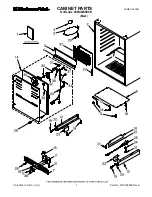
Use
19
EN
Rosé wines
Generally, the rules for serving rosé wines
are the same as for whites. However, it is
important to consider these wines' tannin
content and serve them at a higher
temperature if necessary so that their flavour
is not too sharp. Tannin content permitting,
young, fresh rosé wines are served
between 10°C and 12°C, while more
robust, full-bodied types, including more
mature wines, can be served between
12°C and 14°C.
Red wines
The serving temperature for red wines
depends on a great deal of factors, but in
view of their higher tannin and lower acidity
content compared to whites, they are
usually served at higher temperatures.
Young red wines with low tannins are
usually served between 14° and 16°C,
while for more full-bodied types 16°C or in
exceptional cases even 18°C may be
recommended.
Young red wines high in tannins and with a
fairly uncomplicated structure can be
served between 12°C and 14°C without
tasting too sharp, and will still be very
pleasant. This rule applies to “nouveau”
wines, made by a special method which
reduces their tannin content; they can be
appreciated to the fullest at cooler
temperatures than other red wines.
Sparkling wines
In view of the large number of types of
sparkling wines on the market, there would
be little sense in laying down one rule to fit
them all. Sweet, aromatic white sparkling
wines can be served at a temperature as
low as 8°C. Their aromatic nature means
they are excellent at low temperatures.
Sweet red sparkling wines such as
Brachetto may be served at temperatures
between 10°C and 12°C. Here again, the
more aromatic sparkling wines are suitable
for lower temperatures, even down to 8°C,
while those with a slightly higher tannin
content require temperatures as high as
14°C.
Dry sparkling wines made by the “Charmat
method” or “Martinotti method”, such as
some Prosecco wines, can be served at
temperatures between 8°C and 10°C.
Sparkling wines made by the “traditional
method” and the “méthode Champenoise”,
such as Champagne, require special
consideration: in general these sparkling
wines are served at temperatures between
8°C and 10°C. However, prestige vintage
wines, or sparkling wines that have been
aged for a long time, even 12°C may be
advisable to allow the development of the
complex bouquet that has been slowly and
painstakingly built up over the years.








































